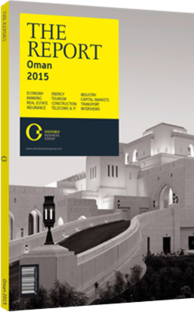Enticing young Omanis in an effort to reach Omanisation targets
With a due date of May 2015, Oman’s new National Tourism Strategy aims to address a range of key challenges in the sector. Amongst these is the ongoing issue of human resources, particularly since one of the main rationales for the high-profile focus on the sector is its ability to deliver jobs as well as tourism receipts. Yet in the area of human resources, there is room for improvement, as many jobs in the sector continue to be performed by expatriates. Changing the balance towards greater Omani workforce participation is thus one of the main thrusts of the new strategy and the Tourism Human Resources Development Action Plan 2011-15 (THRDAP) currently being rolled out.
Plans & Procedures
The strategy, which is being developed by Spanish consultancy THR Innovative Tourism Advisors, aims to be highly integrative by taking socio-economic and labour market factors into account, as well as the environmental and economic impacts of tourism development.
As far as the labour market is concerned, according to figures recently supplied to OBG by the Ministry of Tourism (MoT), at the end of 2013 some 18,531 people were employed in the travel and tourism sector. Breaking this down, hotels and resorts accounted for about half of these jobs, employing a total of 9314 people. Airlines followed with 5288 employees, and travel and tourism offices came third, accounting for 3577 jobs. The smallest segment recorded was the car rental business, which employed 334 people.
These figures have grown significantly since the end of 2013 and are set to expand still further as the National Tourism Strategy rolls out. MoT projections supplied to OBG demonstrate that by the end of 2014 the number of people employed in the sector was expected to have risen to 43,593, more than double the year-end 2013 figure.
Perhaps explaining some of the discrepancy between these expectations and the recent figures are ongoing issues regarding statistical analysis, with part of the THRDAP also aimed at establishing consistent methods of counting tourism sector employees across provinces and departments.
By the end of 2015 the total tourism employment figure is expected to rise to 56,670. The majority of these jobs will be in operations, with those numbers expected to rise from 33,130 at the end of 2014 to 43,068 by year-end 2015. At the end of 2013, however, the majority of jobs in travel and tourism were being done by expats. The MoT figures for Omanisation – the percentage of jobs filled by Omani nationals – show an average across the sector of 39.5%, meaning 60.5% of jobs were filled by non-nationals.
Challenges
Work still needs to be done to entice Omanis to work in the sector; however, there are a number of challenges in achieving this. One area of concern is salaries. Average monthly wages for those starting out in tourism were put at OR400-500 ($ 1035-1294) by the MoT, while jobs in the public sector – the historical arena of choice for many Omanis – offer starting salaries of OR900 ($2330).
Sultan Qaboos University, the National Tourism College and the National Hospitality Institute offer tourism education programmes; however, take-up is relatively low. A 2011 report by the UN World Tourism Organisation and the government of Oman about the THRDAP suggested that these courses were operating at only 50-60% capacity.
According to the report, a cultural association of the tourism sector with haram, or sinful, practices, such as serving alcohol, and a lack of awareness of the sector’s opportunities were the main reasons for the demonstrated lack of interest. One answer to the cultural and religious issues may be for Omanis to take on more administrative roles, although such specialist tasks often require additional training.
The National Tourism Strategy may thus have to look closely at ways of building awareness amongst young Omanis of the sector’s opportunities. Meanwhile, bringing salaries further in line with local expectations may be crucial if Omanisation targets are to be met.
You have reached the limit of premium articles you can view for free.
Choose from the options below to purchase print or digital editions of our Reports. You can also purchase a website subscription giving you unlimited access to all of our Reports online for 12 months.
If you have already purchased this Report or have a website subscription, please login to continue.

